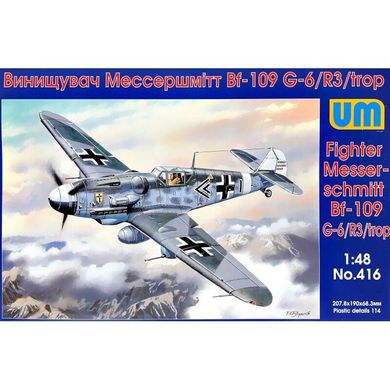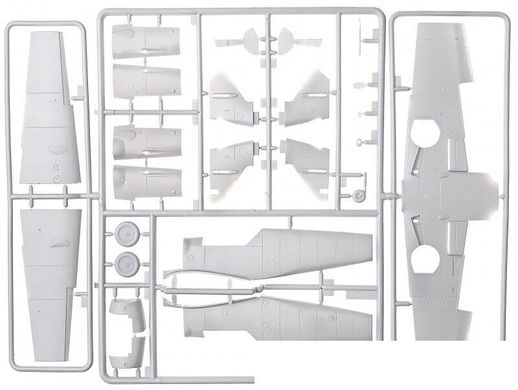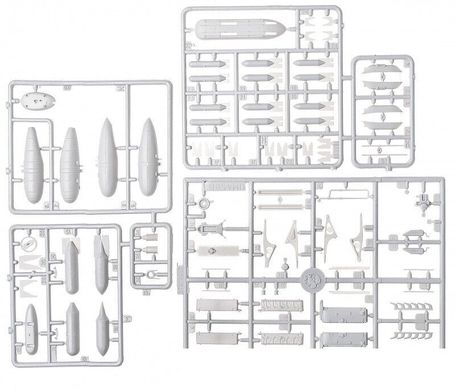The Messerschmitt Bf-109 is a German single-engine fighter of metal construction in a low-wing configuration with classic plumage. It proved to be the Luftwaffe's primary and most produced fighter during World War II. The flight of the prototype took place on May 29, 1935, and serial production continued in 1936-1945. In total, an estimated 35,000 Messerschmitt Bf-109 fighters of all types were produced, many of which entered the Czech and Israeli air forces after the war. The roots of the Bf-109 go back to a competition announced in 1933 by the Luftwaffe for a new fighter. In competition with the He-112, the Bf-109 project initially lost, but thanks to the scheming of Willy Messerschmitt, the project was able to continue, and it eventually won the competition, becoming the Luftwaffe's main fighter. Several major variants of the Bf-109 were developed during production. The first pre-production series was the Bf-109B (Berta) with various versions of the Junkers Jumo 210 (A or Da) engine. They were tested in Spain from 1937 during the civil war. The next version is the Bf-109C (Caesar). They had a different engine than the B version and a large armament consisting of two 20mm guns and two 7.92mm HP guns. These machines also fought in the skies of Spain. The third version is the Bf-109D (Dora) with a Junkers Jumo 210 Da or Daimler-Benz DB 600 engine. It fought in the September campaign but was replaced by the E version at the turn of 1939/1940. The most famous model was the Bf-109E (Emil) with powered by a Daimler-Benz 601A or N engine. It was the first to use a three-bladed rather than a two-bladed propeller. The Bf-109E participated in the French campaign, over England, as well as in North Africa and on the Eastern Front. Ace, who began his career on the Bf-109E, was the famous Adolf Galland. The next version is the Bf-109F (Friedrich), which, according to German pilots, was the most aerodynamically perfect. It changed the shape of the fuselage, wings, fairings of the cabin, but the new engine was not used. It was put into service at the turn of 1940/1941. As part of the development of the design, further specifications of the Bf-109 were developed, of which the G (Gustav) version was the most produced. The most important change that increased the performance of the machine was the installation of a new 12-cylinder Daimler-Benz DB605A engine with a capacity of 1475 hp. Armament on the Bf-109G consisted of a pair of 13mm machine guns located in the fuselage forward of the cockpit fairing, and a 20mm or heavier 30mm MG151 MK108 gun. The last mass-produced version was the Bf-109K (Kurfirst), production of which began in October 1944. Daimler-Benz DB 605DB or DC was used as the engine. The Bf-109K was the fastest version produced during World War II, reaching speeds of up to 730 km/h. In addition, two versions were created - H and Z, but these were rather experimental versions and their mass production did not begin. Further improvements in power plants and armament made the Messerschmitt Bf-109 one of the most dangerous fighters of World War II and at the same time showed the great potential of the slightly angular airframe created by Willy Messerschmitt. Technical data (Bf-109 G-6 version): length: 8.95 m, wingspan: 9.92 m, height: 2.6 m, maximum speed: 640 km / h, rate of climb: 17 m / s, maximum range: 850 km, maximum ceiling 12000m, armament: stationary - 2 13-mm machine guns MG131 and 1 20-mm gun MG151, suspended - 250 kg of bombs, or 2 rocket launchers Wfr. c. 21.






















